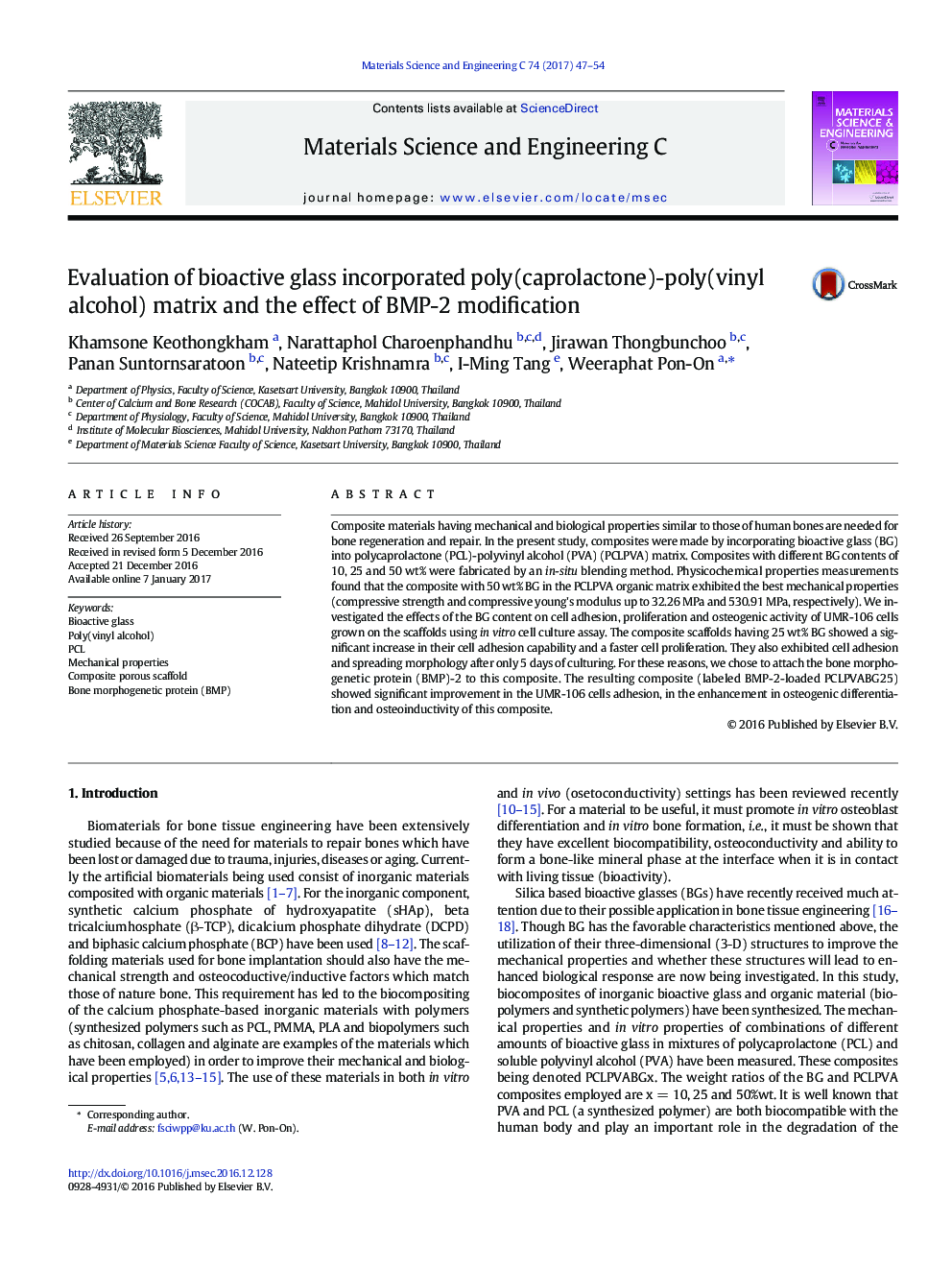| Article ID | Journal | Published Year | Pages | File Type |
|---|---|---|---|---|
| 5435005 | Materials Science and Engineering: C | 2017 | 8 Pages |
â¢Preparation of PCLPVABGx composite scaffolds and their physical properties.â¢Mechanical properties could be adjusted by controlling BG contents in PCLPVA matrix.â¢In vitro cell availability tests confirmed the osteoblast grow on the PCLPVABGx composite scaffolds surface.â¢Upon the BMP-2-loaded PCLPVABG25 scaffolds can enhance cell attachment and significantly improved osteogenicity.
Composite materials having mechanical and biological properties similar to those of human bones are needed for bone regeneration and repair. In the present study, composites were made by incorporating bioactive glass (BG) into polycaprolactone (PCL)-polyvinyl alcohol (PVA) (PCLPVA) matrix. Composites with different BG contents of 10, 25 and 50Â wt% were fabricated by an in-situ blending method. Physicochemical properties measurements found that the composite with 50Â wt% BG in the PCLPVA organic matrix exhibited the best mechanical properties (compressive strength and compressive young's modulus up to 32.26Â MPa and 530.91Â MPa, respectively). We investigated the effects of the BG content on cell adhesion, proliferation and osteogenic activity of UMR-106 cells grown on the scaffolds using in vitro cell culture assay. The composite scaffolds having 25Â wt% BG showed a significant increase in their cell adhesion capability and a faster cell proliferation. They also exhibited cell adhesion and spreading morphology after only 5Â days of culturing. For these reasons, we chose to attach the bone morphogenetic protein (BMP)-2 to this composite. The resulting composite (labeled BMP-2-loaded PCLPVABG25) showed significant improvement in the UMR-106 cells adhesion, in the enhancement in osteogenic differentiation and osteoinductivity of this composite.
Graphical abstractDownload high-res image (191KB)Download full-size image
